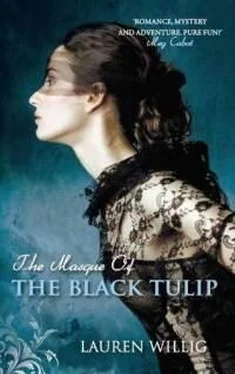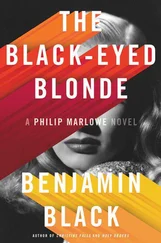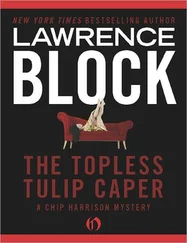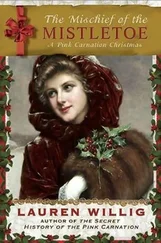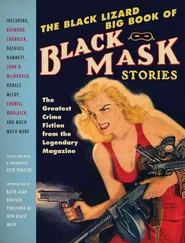If he did manage to acquire my number, it would at least prove that he had been serious about that drink. In old fairy tales, the heroes were frequently put to some sort of test. Toting the head of a dragon home to the princess; pinching the feathers off the tail of a mythical bird; defeating an ogre with a halitosis problem in hand-to-hand combat. I didn't delude myself that I was the stuff of which heroines were made. I didn't even have half a kingdom to offer as reward, unless half a kingdom meant half a very small rented flat in a basement in Bayswater. But if the prize was less, so was the task. Braving the dread telephone in exchange for a drink with yours truly. Compared with hacking down a thicket of thorns, acquiring a phone number seemed negligible.
I would give him until… was Wednesday too soon? If there was a real crisis, I didn't want to rush out and buy a voodoo doll for no good reason. Thursday, I decided generously. If he hadn't called me by Thursday, I would know that I'll call you had simply been shorthand for not interested.
In the meantime, I had a spy to track down.
I couldn't follow the Black Tulip and the Pink Carnation to Ireland, but I could seek them out in the manuscript room of the British Library. If that failed… well, Mrs. Selwick-Alderly had told me to keep her abreast of developments in the dissertation. It would only be polite to give her a call.
Leaning one cheek against the windowpane, I wondered who would resurface first. Colin? Or the Black Tulip?
Once again, the time has come to separate fact from fiction, and make my apologies to the altar of historical accuracy. The flower-themed spies do, in fact, have their place in the historical record. Although the Scarlet Pimpernel, the Purple Gentian, and the Pink Carnation are all fictitious, there were flower-named spies romping across the Channel. La Rose was the more prominent, but one agent did go under the pseudonym Le Mouron (the Pimpernel) — and they identified themselves by means of small cards marked with a scarlet flower. Nor is the notion of a female flower figure, like the Pink Carnation, pure invention. Mile Nymphe Roussel de Preville confounded the revolutionary government under the code name Prime-rose. Reputed to be stunningly beautiful, like Jane, La Prime-rose was a mistress of disguise, equally comfortable gracing a drawing room or masquerading as a man. The ring of spies posing as cravat merchants dispersed by Miles early in the book also have their historical counterparts in the French agents scattered through London posing as tailors, servants, merchants, and milliners.
Back at headquarters in London, there was some shuffling of places and personnel for the purposes of the novel. During the Napoleonic Wars, espionage was largely conducted through a subdepartment of the Home Office called the Alien Office. To avoid confusion, and distressing images of extraterrestrials wandering around London, I followed the fictional tradition that ascribes stealthy deeds of daring to to the War Office. As a sop to the shades of those men who labored in the Alien Office, I borrowed their building and staff for the use of my fictitious War Office. Number Twenty, Crown Street, where Miles receives his instructions from William Wickham, had been the headquarters of the Alien Office since its inception in 1793.
As for William Wickham… I have very poor luck with spymasters, who seem to have a habit of resigning just before I need them. In 1802, Wickham left the Alien Office and sailed for Dublin in his new capacity as Chief Secretary to the Lord Lieutenant of Ireland. However, Wickham is to the English secret service what Fouche* was to the French. Using the Alien Office as base, he built a network of spies — or, as Wickham himself euphemistically termed it, a "preventative police" — that spanned the Continent and terrified the enemies of England. Wickham's new title changed little; he continued to wield sway over England's efforts at espionage, first from the Irish Office and later from the Treasury. Despite his Irish appointment, Wickham was, in fact, physically present in London in early summer of 1803, and would have been on hand to give Miles his marching orders.
My final mea culpa is for those avid students of the Regency era who will have noticed some importations from slightly later in the century. Almack's, "the Marriage Mart," where Miles hid from matchmaking mothers behind convenient outcroppings of masonry, had been in operation since 1765. The tepid lemonade, knee breeches for the gentlemen (the Duke of Wellington was once refused admittance for committing the unpardonable gaffe of appearing in trousers), and the firm closing of the door upon any unfortunates who desired entry after the magical hour of eleven would all have been familiar to Henrietta and Miles. They would have blinked in confusion, however, at the mention of the quadrille, which was not introduced into England until 1808, although it had already attained popularity across the Channel. Likewise, Sarah, Lady Jersey, was only seventeen in 1803, and would not marry the future Earl of Jersey for another year, nor become Lady Jersey until 1805 (not to be confused with the other Lady Jersey, her mother-in-law, chiefly famed for extra-conjugal cavorting with Prinny). Nonetheless, both the quadrille and Lady Jersey are such commonplaces of the period that the ballroom felt incomplete without them.
As always, for the bulk of the details relating to espionage during the Napoleonic Wars, I am deeply indebted to Elizabeth Sparrow's minutely researched work on the subject, Secret Service: British Agents in France, 1792 — 1815. For pretty much everything else, heartfelt thanks go to Dee Hendrickson and her brilliant Regency Reference Book (aka Everything You Wanted to Know About the Regency but Were Afraid to Ask), and the ever-resourceful ladies of the Beau Monde and Writing Regency, whose encyclopedic knowledge of the early nineteenth century saved Henrietta — and her author — from any number of shocking gaffes.
